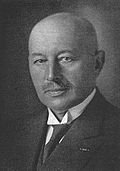
Jozef Maria Laurens Theo "Jo" Cals was a Dutch politician of the Catholic People's Party (KVP) and jurist who served as Prime Minister of the Netherlands from 14 April 1965 until 22 November 1966.

The Christian Historical Union was a Protestant Christian democratic political party in the Netherlands. The CHU is one of the predecessors of the Christian Democratic Appeal (CDA), into which it merged in September 1980.
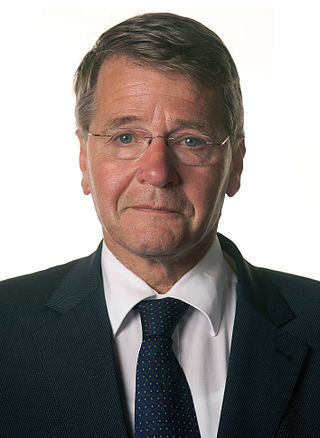
Jan Pieter Hendrik "Piet Hein" Donner is a retired Dutch politician of the Christian Democratic Appeal (CDA) party and jurist. He was granted the honorary title of Minister of State on 21 December 2018.

The first Kok cabinet, also called the first Purple cabinet was the executive branch of the Dutch government from 22 August 1994 until 3 August 1998. The cabinet was formed by the social-democratic Labour Party (PvdA), the conservative-liberal People's Party for Freedom and Democracy (VVD), and the social-liberal Democrats 66 after the election of 1994. The cabinet was a centrist grand coalition and had a substantial majority in the House of Representatives with Labour Leader Wim Kok serving as Prime Minister. Prominent Liberal politician Hans Dijkstal served as Deputy Prime Minister and Minister of the Interior, while Progressive-Liberal Leader Hans van Mierlo served as Deputy Prime Minister and Minister of Foreign Affairs.

The First Biesheuvel cabinet was the executive branch of the Dutch Government from 6 July 1971 until 9 August 1972. The cabinet was formed by the christian-democratic Catholic People's Party (KVP), Anti-Revolutionary Party (ARP) and Christian Historical Union (CHU), the conservative-liberal People's Party for Freedom and Democracy (VVD) and the social-democratic Democratic Socialists '70 (DS'70) after the election of 1971. The cabinet was a centrist coalition and had a slim majority in the House of Representatives with Protestant Leader Barend Biesheuvel a former Minister of Agriculture serving as Prime Minister. Prominent Catholic politician Roelof Nelissen the Minister of Economic Affairs in the previous cabinet served as Deputy Prime Minister, Minister of Finance and was given the portfolio of Suriname and Netherlands Antilles Affairs, former Liberal Leader Molly Geertsema served as Deputy Prime Minister and Minister of the Interior.

The First Beel cabinet was the executive branch of the Dutch Government from 3 July 1946 until 7 August 1948. The cabinet was formed by the christian-democratic Catholic People's Party (KVP) and the social-democratic Labour Party (PvdA) after the election of 1946. The cabinet was a centre-left grand coalition and had a substantial majority in the House of Representatives with prominent Catholic politician Louis Beel serving as Prime Minister and dual served as Minister of the Interior continuing from the previous cabinet. Labour Leader Willem Drees continued as Deputy Prime Minister and Minister of Social Affairs from the previous cabinet. According to one study, “Beel was of the opinion that a joint KVP-PvdA program should be presented to other political groups. According to Beel, that program should be socio-economically progressive, that is to say reform-oriented in favor of broad layers of the population. The socialists should not have to fear that a conservative wing within the KVP would rule the roost.”
Roman/Red is the nickname for a period in Dutch politics between approximately 1945 and 1958. This period was characterized by coalitions between the Catholic and social-democratic parties in the Netherlands and Belgium. "Roman" refers to the parties with Roman Catholic affiliation, and "red" refers to the colour associated with social democrats. During the Roman/Red period, the Catholic People's Party (KVP) and the social-democratic Labour Party (PvdA) formed the core of several 'Roman/Red' cabinets, led primarily by Willem Drees.
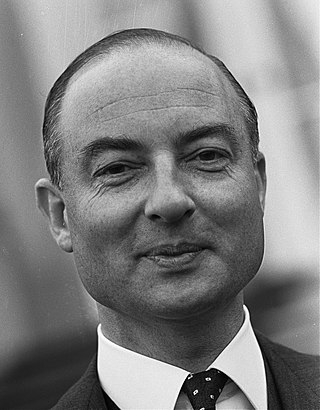
Wilhelm Klaus Norbert Schmelzer was a Dutch politician, diplomat and economist who served as Leader of the Catholic People's Party (KVP) from 1963 to 1971 and Minister of Foreign Affairs from 1971 to 1973.
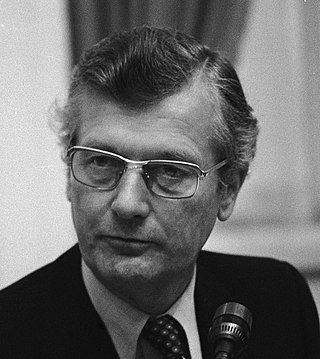
Jan de Koning was a Dutch politician of the defunct Anti-Revolutionary Party (ARP) and later the Christian Democratic Appeal (CDA) party and social geographer.
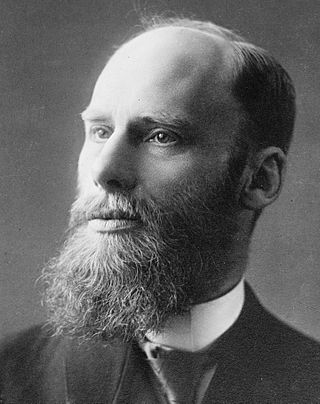
Jan Rudolph Slotemaker de Bruïne was a Dutch politician of the defunct Christian Historical Union (CHU) party now merged into the Christian Democratic Appeal (CDA) party and theologian.

The Second Gerbrandy cabinet, also called the Third London cabinet was the Dutch government-in-exile from 27 July 1941 until 23 February 1945. The cabinet was formed by the political parties Roman Catholic State Party (RKSP), Social Democratic Workers' Party (SDAP), Anti-Revolutionary Party (ARP), Christian Historical Union (CHU), Free-thinking Democratic League (VDB) and the Liberal State Party (LSP) following the resignation of First Gerbrandy cabinet on 12 June 1941. The national unity government (War cabinet) was the third of four war cabinets of the government-in-exile in London during World War II.

The First Gerbrandy cabinet, also called the Second London cabinet was the executive branch of the Dutch government-in-exile from 3 September 1940 until 27 July 1941. The War cabinet was formed by the christian-democratic Roman Catholic State Party (RKSP), Anti-Revolutionary Party (ARP) and Christian Historical Union (CHU), the social-democratic Social Democratic Workers' Party (SDAP), the social-liberal Free-thinking Democratic League (VBD) and the conservative-liberal Liberal State Party (LSP) after the resignation of the previous Cabinet De Geer II. The national unity government (War cabinet) was the second of four war cabinets of the government-in-exile in London during World War II.

Charles Joseph Ignace Marie Welter was a Dutch politician and diplomat of the General League of Roman Catholic Caucuses, later the Roman Catholic State Party (RKSP), the Catholic People's Party (KVP) and founder of Catholic National Party (KNP) before rejoining the Catholic People's Party and nonprofit director.

The Second De Geer cabinet, also called the First London cabinet, was the cabinet of the Netherlands from 10 August 1939 until 3 September 1940. The cabinet was formed by the political parties Roman Catholic State Party (RKSP), Social Democratic Workers' Party (SDAP), Anti-Revolutionary Party (ARP), Christian Historical Union (CHU) and the Free-thinking Democratic League (VDB) following the dismissal of the Fifth Colijn cabinet by Queen Wilhelmina on 27 July 1939. The national unity government became a War cabinet on 14 May 1940 following the German invasion and fled to London. The government-in-exile was dismissed by Queen Wilhelmina on 26 August 1940.
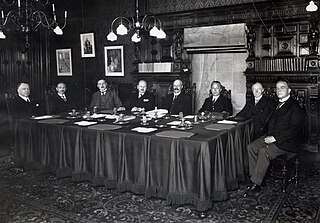
The Third Ruijs de Beerenbrouck cabinet was the cabinet of the Netherlands from 10 August 1929 until 26 May 1933. The cabinet was formed by the political parties Roman Catholic State Party (RKSP), Anti-Revolutionary Party (ARP) and the Christian Historical Union (CHU) after the election of 1929. The centre-right cabinet was a majority government in the House of Representatives. It was the last of three cabinets of Charles Ruijs de Beerenbrouck, the Leader of the Roman Catholic State Party as Prime Minister.

The First Colijn cabinet was the cabinet of the Netherlands from 4 August 1925 until 8 March 1926. The cabinet was formed by the political parties Roman Catholic State Party (RKSP), Anti-Revolutionary Party (ARP) and the Christian Historical Union (CHU) after the election of 1925. The centre-right cabinet was a majority government in the House of Representatives. It was the first of five cabinets of Hendrikus Colijn, the Leader of the Anti-Revolutionary Party as Prime Minister.

The Second Ruijs de Beerenbrouck cabinet was the cabinet of the Netherlands from 18 September 1922 until 4 August 1925. The cabinet was formed by the political parties Roman Catholic State Party (RKSP), Anti-Revolutionary Party (ARP) and the Christian Historical Union (CHU) after the election of 1922. The centre-right cabinet was a majority government in the House of Representatives and was a continuation of the previous Cabinet Ruijs de Beerenbrouck I. It was the second of three cabinets of Charles Ruijs de Beerenbrouck, the Leader of the Roman Catholic State Party as Prime Minister.

Johan Willem Albarda was a Dutch politician of the defunct Social Democratic Workers' Party (SDAP) and later co-founder of the Labour Party (PvdA) and civil engineer.

Arie Adriaan "Aat" van Rhijn was a Dutch politician of the defunct Christian Historical Union (CHU) party and later of the Labour Party (PvdA) and jurist.









